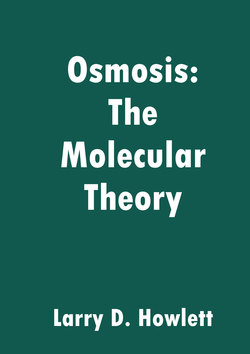Читать книгу Osmosis: The Molecular Theory - Larry Howlett - Страница 8
На сайте Литреса книга снята с продажи.
Thermodynamics of Moist Air
ОглавлениеThe psychrometric chart, figure 3, displays some of the thermodynamic properties of moist air.
Thermodynamics relates to energy and its transformations. When a sufficient number of thermodynamic properties of a substance are known, a unique value for the remaining properties can be determined. Thermodynamic properties are directly related to the energy of a substance or a system. Thermodynamic properties of standard air are presented in tables and on psychrometric charts as shown in Figure 3.
In many fields, thermodynamic properties of temperature, pressure, and relative humidity are considered independent thermodynamic variables because they can be directly measured using common instruments. Some commonly used dependent thermodynamic variables are chemical potential, Gibbs free energy, enthalpy, entropy, and vapor pressure.
For an ideal gas, the thermodynamic properties are related by the perfect gas equation, equation 2. This relationship between the thermodynamic variables has been verified by experiments on many gases and gas mixtures.
PV = RT (2)
Pressure, P, volume, V, and temperature, T are thermodynamic properties of a gas and R is the gas constant for a specific gas or mixture of gases.
If we define two variables (i.e. pressure (P) & temperature (T)), the third thermodynamic variable volume (V) is uniquely determined from the perfect gas equation.
For moist air with the gas constant determined from the mixture of gases, three thermodynamic variables are required to determine any other thermodynamic property. Typical and readily measured independent values are Pressure, Temperature, and relative humidity. Some of the unique dependent thermodynamic variables for moist air are humidity ratio, enthalpy, density, and vapor pressure. Note that vapor pressure refers to the pressure of the moisture vapor in the air.
